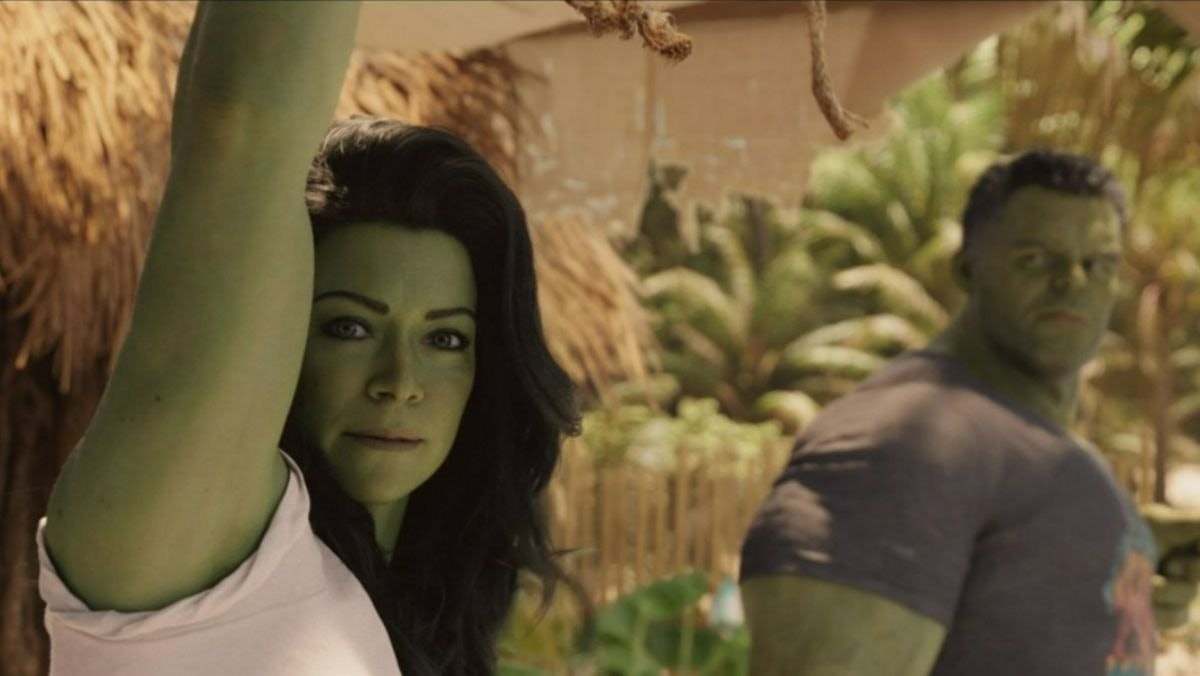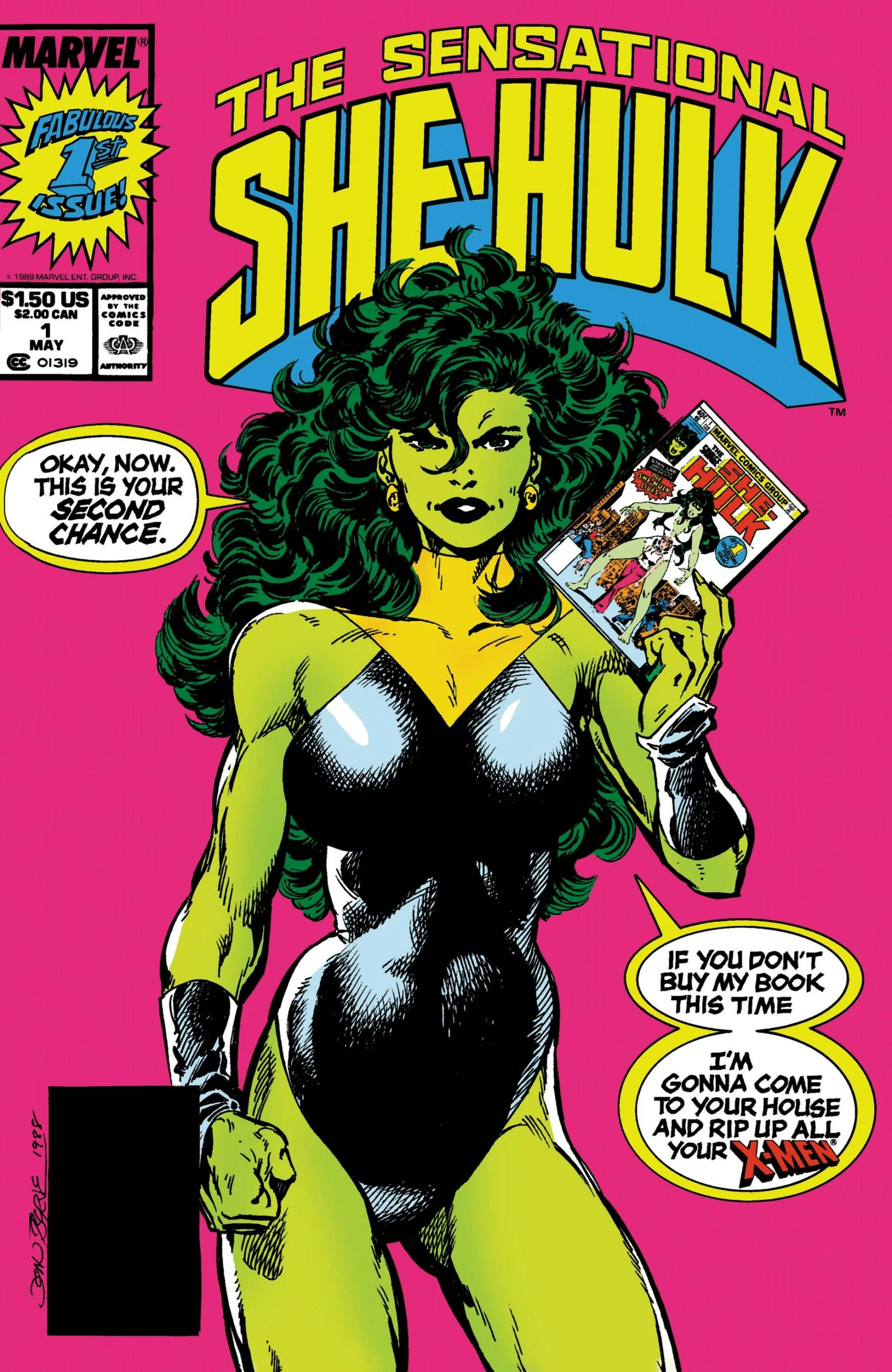
When the She-Hulk trailer premiered at Comic-Con, there was a lot to get exciting about. Bruce is back! Emil Blonsky makes a cameo! And Tatiana Maslany nails it both as Jennifer Walters and her titular, green alter ego. But there was one thing that stood out as a (fittingly) green flag for the future: fourth wall breaks that give the series a more informal tone.
Now that we’re past the promotional phase of the Marvel series and are five episodes in, how is the narrative device faring? Honestly, not so great. Instead of either consistently incorporating it or eliminating it entirely, the show has found an unhappy medium. Here’s how, moving forward, She-Hulk could fix the fourth wall of it all.
She-Hulk’s direct-address elements started out strong. In Episodes 1 and 2, our protagonist would often explain things to the camera, making meta references to the MCU and generally acting very aware that she is in a TV show.
But, in Episode 3, something changed. The self-awareness started out strong, with Jen warning the viewers that this wasn’t going to be a “cameo-of-the-week” show, but then... nothing. In fact, there wasn’t another fourth-wall break until 17 minutes later, when Jen stuck her head in frame to note that the plot was “Connecting the A and B story. Nice.” Since then, the direct-address device has been used sparingly, maybe once or twice an episode. It’s to the point where, now, when Jen suddenly looks at the camera, it’s startling — not generally the reaction you aim to trigger in a sitcom audience.

Of course, breaking the fourth wall is not something She-Hulk: Attorney at Law invented, even within the Walters’ world. Acknowledging she’s in a comic book and sometimes literally attempting to crawl out of the panels is part of Jen’s comic book persona. So, if it’s so integral to the She-Hulk brand, why isn’t it being better utilized in the TV series?
To find out, we need to look at two of the most iconic direct address TV shows in history: Saved by the Bell and Fleabag.
Phoebe Waller-Bridge’s Fleabag famously used fourth-wall breaks and glances at the camera to make the audience the lead character’s confidante. The nameless protagonist of the show never really had any friends or people she was honest with to serve as a sounding board, so the viewer had to fill that role. In She-Hulk, Jen has a best friend, Nikki. If she can say it to Nikki, then why would she need to say it to us?

Then, there’s Saved by the Bell. This kids sitcom featured its protagonist, Zack Miller, often calling a “time-out” to explain a concept or scheme to the audience. Jen has never really been one for schemes, so this isn’t a necessary usage either.
It feels like She-Hulk was written purely as a sitcom, and the asides were added as an afterthought to keep the character true to her comics origin. The TV series has to pick a direction and commit: either get rid of all the asides, or add way more, finding a narrative reason for the character-viewer connection. It would be sad to see the team behind She-Hulk remove the fourth-wall breaks altogether, as they are one of the most beloved parts of the She-Hulk’s persona, so here’s hoping upcoming scripts double down on the device.
Fourth wall breaks are always a bold choice, but they work best when properly committed to.
She-Hulk: Attorney at Law is now streaming on Disney+.







